Staff Sergeant Eugene Joseph Mlot
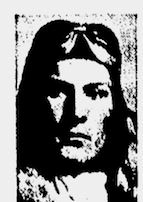
- Unit: 93rd Bomber Group, 328th Bomber Squadron, Heavy
- Service Number: 16060659
- Date of Birth: September 25, 1918
- Entered the Military: April 4, 1942
- Date of Death: June 24, 1944
- Hometown: Milwaukee, Wisconsin
- Place of Death: above Dreux, France
- Award(s): Air Medal with 3 Oak Leaf Clusters, Distinguished Flying Cross, Purple Heart
- Cemetery: Plot D, Row 1, Grave 32. Normandy American Cemetery, Colleville-sur-Mer, France
Mentored by Ms. Margaret Holtgreive
Ronald Wilson Reagan College Preparatory High School
2014-2015
Early Life
His father, Karl, arrived in the United States on the Graf Waldersee with his brother, Stanislaw, from Hamburg, Germany, on February 20, 1910. The 1910 census shows the brothers living in a boarding house in Milwaukee, working as laborers in a foundry. A 1911 city directory lists the brothers as Carl and Stanley, residing at 1246 American Avenue.
His mother, Agnieska (later Agnes), Bartoszek, sailed from Rotterdam on the Nieuw Amsterdam, arriving in New York on July 6, 1914. Agnes and Carl married on July 14, 1915. They had two children, Esther, born in 1917, and Eugene in 1918. In April 1926, Carl became a naturalized citizen but died in 1930. The siblings attended Bay View High School in Milwaukee.
Agnes kept the house in order while her children found work. Eugene worked a variety of physical jobs, while Esther took up hairdressing at a nearby beauty salon. Both made decent wages and kept their tiny house. The family spoke Polish in the home. Agnes filed a petition for naturalization, which was approved on December 3, 1941.
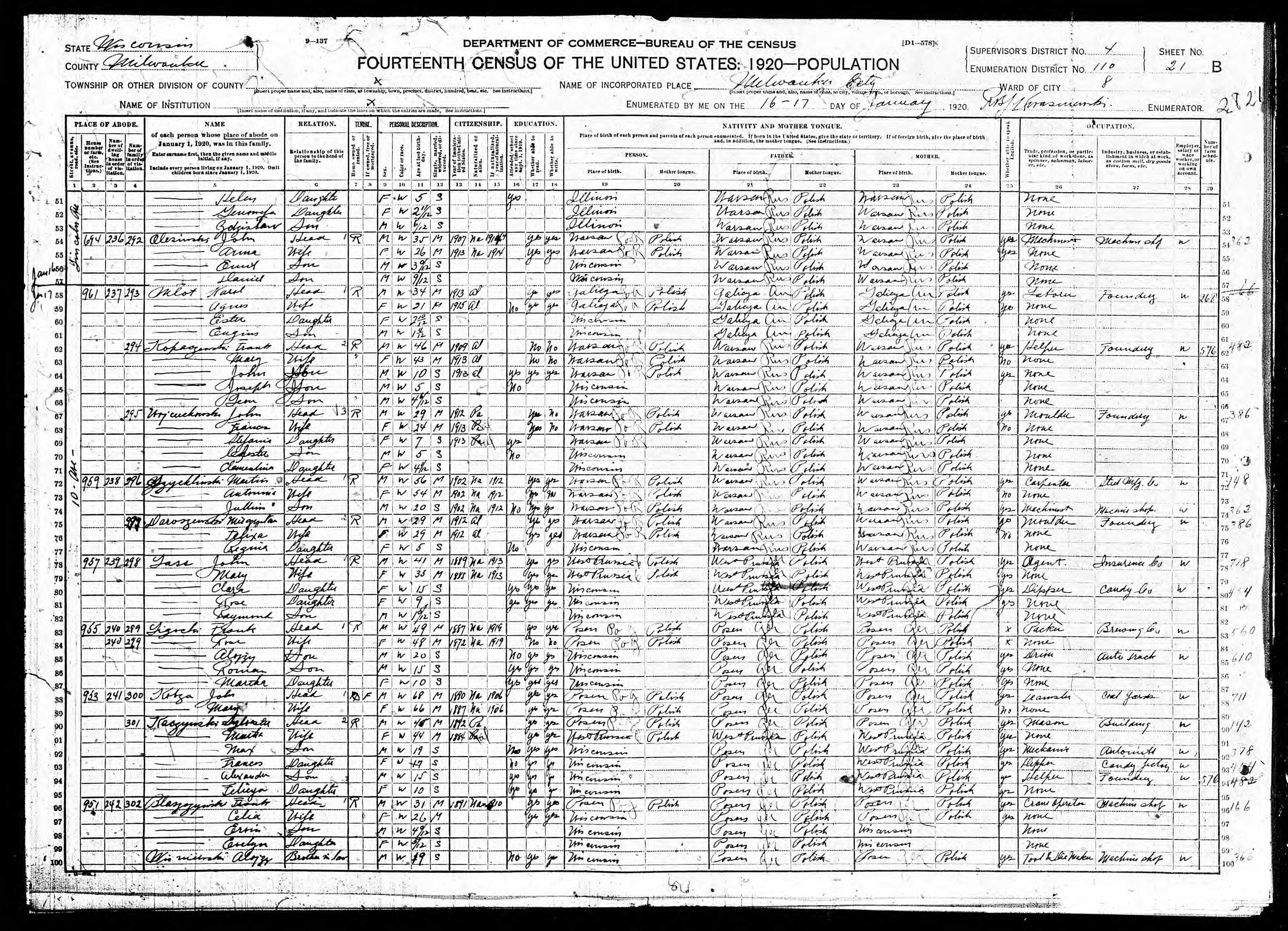

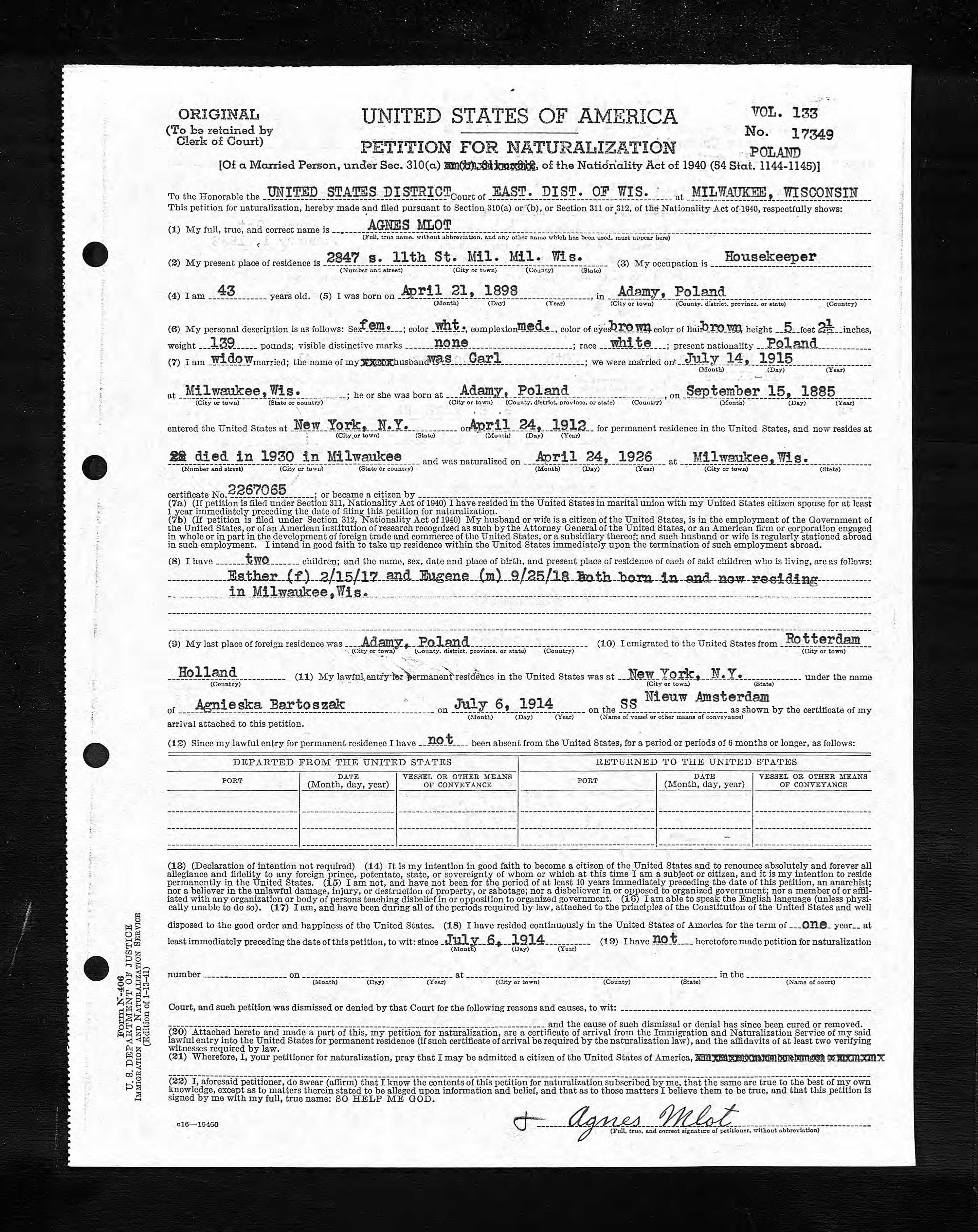
Homefront
The poverty of the Great Depression gave way to a booming industry in Milwaukee’s factories, where they would eventually make radios, Harley-Davidson motorcycles, and much more for the war.
Military Experience
Staff Sergeant Eugene J. Mlot flew in the 328th Bomber Squadron for the heavy 93rd Bomber Group, nicknamed the “Flying Circus.” His plane, a B-24 Liberator, was called the Victory Belle, complete with pin-up girl nose art. Mlot was the nose gunner and flew many successful missions.
Mlot participated in many bombing missions, helping to open the doors to France for the rest of the Allies that would land on June 6, 1944. However, on June 24, just weeks after the success and tragedy of D-Day, his plane was hit with German flak south of Dreux, France. Some of his crew members managed to jump from the plane and survived for weeks in the hostile enemy territory below. The plane later exploded, crashing into the French countryside.
German troops later recovered his remains and dog tags. After the war, the tags and copies of German records were preserved by the National Archives and Records Administration.
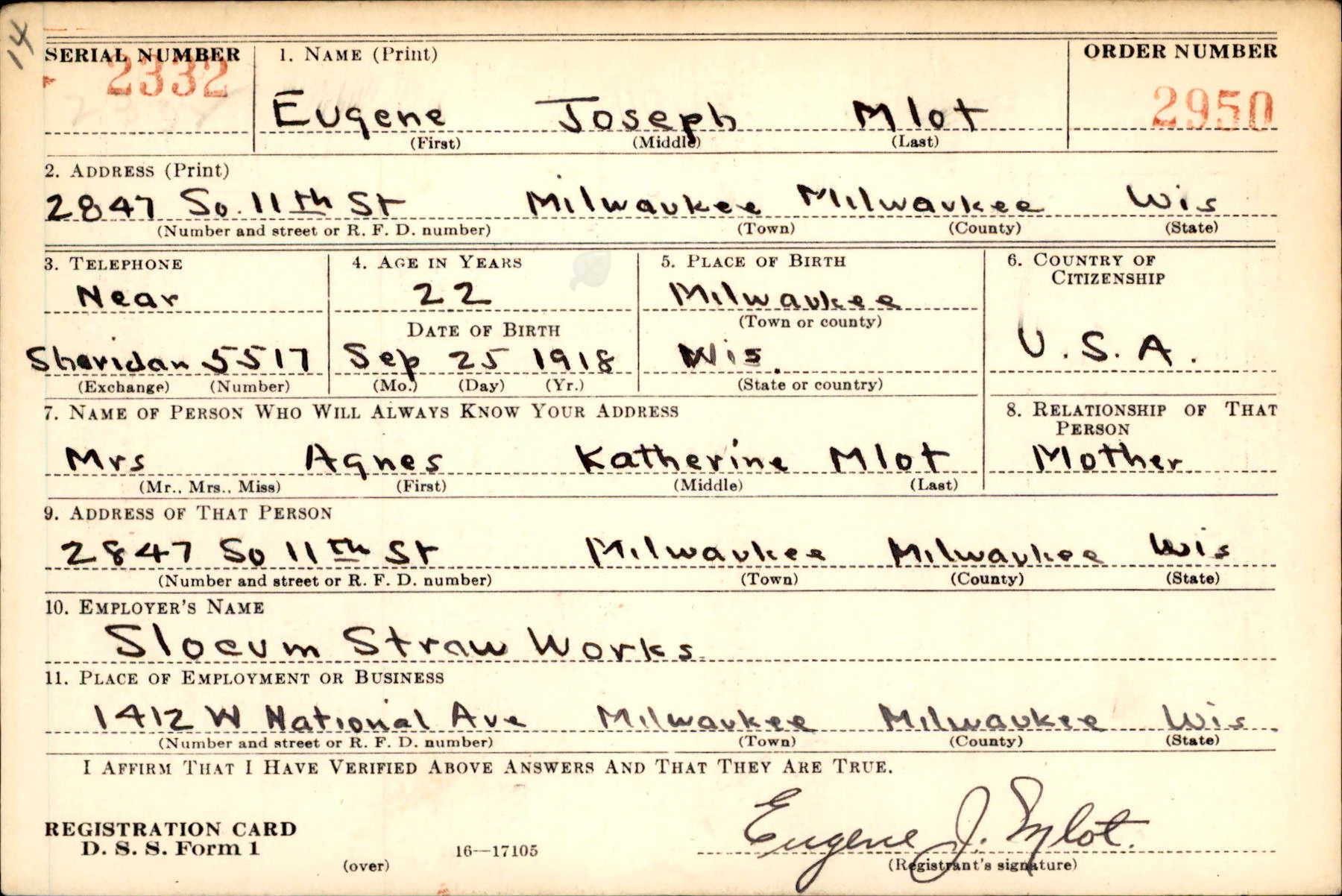
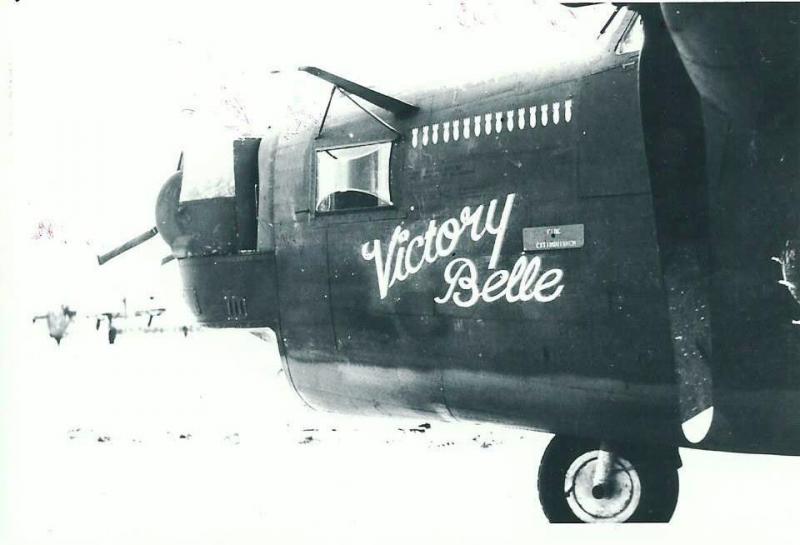

Eulogy
Eugene J. Mlot had experience as a millinery worker, shipping clerk, and electrician before joining the U.S. Army Air Forces in 1942. When I first saw Eugene’s record, I instantly knew that he was the soldier I wanted to study. I don’t know how or why I knew—I wasn’t even all that in love with his name (Eugene!) But seeing that picture, and putting a face to a name, changed everything.
Eugene was in the war for two years and two months. His big sister made more money than he did as a hairdresser back in Milwaukee, which I’m sure, as a sibling myself, annoyed him to no end. He participated in many bombing missions, helping to open the doors to France for the rest of the Allies that would land on June 6, 1944. However, on June 24, just weeks after the success and tragedy of D-Day, his plane was hit with German flak south of Dreux, France. Some of his crew members managed to jump from the plane and survived for weeks in the hostile enemy territory below. The plane later exploded, crashing into the idyllic French countryside, lost to the Allies for months as war raged on without the few airmen the crash took from them.
I suppose it is hard, looking back some 70 years later, to imagine these men, these soldiers, as boys—boys who might have been scared but brave, flying the most dangerous missions with their friends and their pin-up girls. For a moment, during months of studying dark and bloody tales, Eugene’s life made me and Mrs. Holtgreive smile as we realized how wonderful it was—and how amazing that very same life could have been had it continued.
To sum up, the story of Eugene grows harder as it continues for me. For his actions in the war, he received the Air Medal with three oak clusters and the Distinguished Flying Cross, along with the Purple Heart. For a long time, he was listed as MIA. He was just a few years older than us.
Eugene Mlot deserves to be honored today, not just because he gave the greatest sacrifice of all, but because he was one of the many who didn’t return home to their families. One of the many whose families became smaller and smaller during the war until tales of would-be grandfathers and great-uncles were lost to our generation.
Eugene deserves to be honored for his bravery, but also for what he left behind when he began a journey many cannot even imagine, including myself, to liberate families and mothers and fathers in a country halfway across the world. At the same time, his own family waited in fear. It is one of the greatest sacrifices of all before laying one’s life down.
If a lesson could come out of this institute, and this day at all, it would be to remember. To remember what these men and these boys fought for and the enormity of the sacrifices they gave in blood on foreign shores. Eugene’s story is lost somewhat to time, as fewer and fewer pictures are kept, stories retold, or memories were written down. Carl Sagan once said, “You have to know the past to understand the present.” And here, that quote again rings true.
One day, Eugene’s story may fade away as well. Eventually, time and the elements will take back this plot, but it is a beautiful thought to think that he will stay here and that the earth will never forget him and his sacrifice.
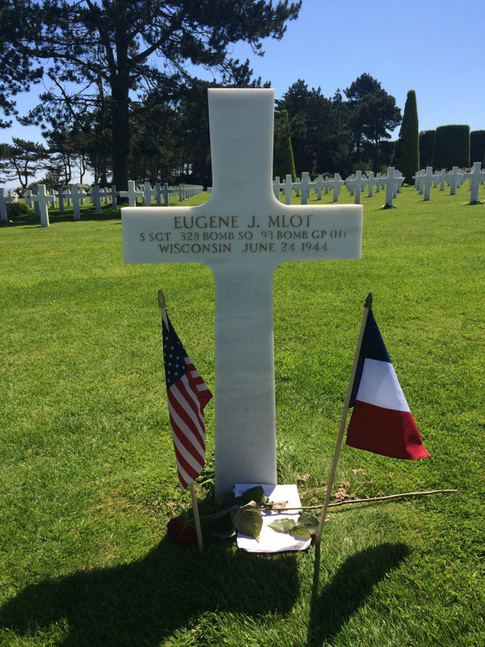
Reflection
Meeting Eugene J. Mlot across the past few months has been an indescribable experience. Beyond just delving into the past, I have found in myself a drive to preserve history.
After months of trying to find just a tiny amount of information, the idea that a person could disappear after less than a century disheartened me. We found out much about Eugene through military records, but I kept asking myself, what would we have found if he didn’t have a governmental file? What if he had been like thousands of other people who had lived and died in the Great War? People who we will never know anything about, beyond what has been passed down through families.
Eugene’s familial line most likely ended with his death. As someone with a wide family who valued oral histories, this made me inexplicably sad. A few weeks after returning from Europe, I was gratified to be contacted by a local Milwaukee citizen. She was not a direct relation, but her family was Polish, and they shared a last name. In a phone call, she allowed me to speak on end about Eugene and his family, trying to see the similarities between her family members.
Even though he wasn’t a relation, the thought that Eugene’s life (and possibly that of his children) could have turned out like her own made me smile. For myself and Mrs. Holtgreive, after months of feeling like the world had forgotten about Eugene, this was a blessing.
Like many men and boys, Eugene didn’t return home, and, like many, his loss left a gaping hole in the lives of those he left behind. Primarily because of that, my perception of history has altered irrevocably.
Rest in Peace, Eugene. You will not be forgotten.
Bibliography
Primary Sources
#42-100294 B-24 Liberator. Photograph. American Air Museum in Britain (UPL 17970). www.americanairmuseum.com/media/17970.
Agnes Mlot. Naturalization Records Indexes, 1971-1992. Digital images. ancestry.com.
Agnes Mlot. Petition for Naturalization. Wisconsin Federal Naturalization Records, 1848-1992. Digital images. ancestry.com.
Agnieska Bartoszek. New York Arriving Passenger and Crew Lists (including Castle Garden and Ellis Island), 1820-1957. Digital images. ancestry.com.
Esther Mlot. Photograph. Bay View High School Yearbook. 1935.
Eugene J. Mlot. World War II Army Enlistment Records, 1938-1946. ancestry.com.
Eugene J. Mlot. World War II Draft Cards Young Men, 1940-1947. Digital images. ancestry.com.
Karl Mlot. Hamburg Passenger Lists, 1850-1934. Digital images. ancestry.com.
Karl Mlot. New York Arriving Passenger and Crew Lists (including Castle Garden and Ellis Island), 1820-1957. Digital images. ancestry.com.
Milwaukee, Wisconsin. City Directory, 1911. Digital images. ancestry.com.
Missing Air Crew Report 42-100294. Digital images. fold3.com.
Wisconsin. Milwaukee County. 1910 U.S. Federal Census. Digital images. ancestry.com.
Wisconsin. Milwaukee County. 1920 U.S. Federal Census. Digital images. ancestry.com.
Wisconsin. Milwaukee County. 1940 U.S. Federal Census. Digital images. ancestry.com.
Secondary Sources
“93rd Bomb Group.” American Air Museum in Britain. Updated August 23, 2019. Accessed March 23, 2021. www.americanairmuseum.com/unit/546.
“Agnieska ‘Agnes’ Bartoszek Mlot.” Find a Grave. Updated December 30, 2016. Accessed March 23, 2021. www.findagrave.com/memorial/174677838/agnieska-mlot.
Ambrose, Stephen E. Band of Brothers: E Company, 506th Regiment, 101st Airborne From Normandy to Hitler’s Eagle Nest. New York: Simon and Schuster, 1992.
“The Entire History of the 93rd Bombardment Group.” 93rd Bomb Group. Accessed March 23, 2021. www.93bg.com/complete-history.
“Eugene J. Mlot.” American Battle Monuments Commission. Accessed March 23, 2021. www.abmc.gov/decedent-search/mlot%3Deugene.
Kaufmann, J. E., and H. W. Kaufmann. The American GI In Europe in World War II. Mechanicsburg: Stackpole Books, 2009.
Lewis, Nigel. Exercise Tiger. New York: Prentice Hall Press, 1990.
“Milwaukee Polonia.” University of Wisconsin-Milwaukee Libraries. Accessed March 23, 2021. uwm.edu/mkepolonia/about-the-collection/.
Sandler, Martin W. Lost to Time: Unforgettable Stories That History Forgot. New York: Sterling Publishing, 2010.
“SSgt Eugene J. Mlot.” Find a Grave. Updated August 8, 2010. Accessed March 23, 2021. www.findagrave.com/memorial/56647901/eugene-j-mlot.
Wieviorka, Olivier. Normandy: The Landings to the Liberation of Paris. Cambridge: Harvard University, 2008.

